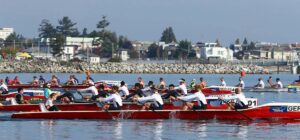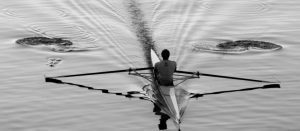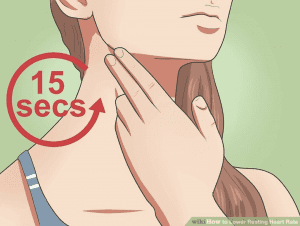A guest post by David Harralson.
I was reading an article by Ed McNeely recently (https://peakcentre.wordpress.com/2009/01/20/peak-power-the-limiting-factor-to-rowing-performance/) who proposed a theory that rowing strength was more important than aerobic conditioning now that most rowers are well conditioned. I agree with that proposition. What got me thinking was that while the idea seems credible, he gave no formal backup for the sentiment.
I agree with Ed McNeely’s assertion that peak power is the limiting factor to rowing performance. However, saying something does not make it true. We need a more formal approach to justify this assertion.
In the rest of this article I set out how I verified his assertion and in the second and third parts, set out a training programme to increase your power on an erg and on water.
How I verified Power as limit to rowing performance
I use the hyperbolic strength vs. repetitions curve as a base. This curve starts at its maximum value at one repetition. As the number of repetitions increases, strength decreases, first somewhat rapidly as the repetitions increase from one to two to five to ten …. The decrease slows as the repetitions increase, eventually becoming quite small at very high repetitions (like at one hour). This curve is universal, but the shape is different for different individuals in its maximum value, its value at high repetitions, and the relative shape of the curve.(For the mathematically inclined, the general formula is aX^m x bY^n = C where a, b, m, n, and C are individual specific.)
Look at the hyperbolic strength versus repetitions curve. Concentrating on aerobic fitness (improving strength at the high repetitions side of the curve) increases strength at high repetitions. The percentage of strength improvement decreases as the number of repetitions decrease, becoming very little at one repetition. Similarly, increasing strength at the one repetition point has decreasing strength improvements at very high repetitions. However, the improvements at the intermediate repetitions that constitute a race are larger for strength improvements than for aerobic fitness improvements. This is more noticeable for the 1K Masters distance than for the 2K Collegiate distance.
[block id=”adsense-below-the-fold”]
There is an analogous aerobic fitness vs. repetitions curve. This is logarithmic curve, starting at a low value at one repetition, and increasing as the repetitions increase, fairly rapidly at first, then the rate of improvement decreasing until it is very small at high repetitions like at one hour. Since this paper deals with strength in rowing, I will use the hyperbolic strength vs. repetitions curve to devise a training regimen.
The first part of strength training is weight training, using lifts that correlate as well as possible with the rowing stroke.
The first exercise is the dead lift. Take a weight that you can barely lift for ten repetitions. On each repetition, try to lift the weight as quickly as possible, as that maximizes the power you are exerting. On a different day, take a weight that you can lift for barely five repetitions. On a different day, start with the five-repetition weight and lift it once. Add weight and lift it once, and continue adding weight until you reach your one repetition maximum.
The dead lift approximates the stroke at half slide. Place one, two, and three plates on the floor. Step up on the plates to perform the dead lift, but with a reduced weight. On one day, do ten repetitions. On another day, add weight and perform five repetitions. On another day, do singles, adding weight, until you reach your one repetition maximum.
Another rowing oriented lift is the bench row. Take a weight you can do for ten repetitions. On a different day, add weight such that you can do five repetitions. On a different day, do singles, adding weight until you reach your one repetition maximum.
This is the basic set of exercises. If you (or your coach) want to use more or different lifts, do so, but use the basic concept of developing strength with different number of repetitions along the hyperbolic strength versus repetitions curve. Vary the repetitions by using two or three repetitions instead of one, four through seven instead of five, and eight through twelve instead of ten.
The second part of strength training is erg training.
For the Rowperfect, expose all ventilation holes for maximum resistance. Ensure that joules or watts displays on the monitor. For the Concept2, download the ErgData app to your iOS or Android smart phone or tablet and connect the unit to the PM3/4. Set the resistance to 10. Select the force curve on the PM3/4. Select watts instead of pace in the ErgData app. (Neither machine allows you to select a high enough resistance, but we will use what we have).
From a dead stop, perform a maximum force stroke. Note the value of watts or joules attained. Let the flywheel come to a stop and repeat. Do this for five or more repetitions. (Look at the force curve for each repetition and ensure that there are no peaks, dips, or hollows in the force curve. If there are, decrease the intensity to see if you can get a smooth curve at a lower intensity and gradually increase the intensity. (There are published force curves of elite rowers with non-optimal force curves, so if yours is not optimal, this is an area in which you can improve)
- From a dead stop, perform five maximum strokes. Note the watts value. Rest and repeat several times.
- Select a distance of 100 meters. Row at maximum intensity and note the elapsed time.
- Select a distance of 200 meters. Row at maximum intensity and note the elapsed time.
- Select a distance of 500 meters. Row at maximum intensity (for that distance) and note the elapsed time.
The first two use mainly stored energy (the ATP-CP system). The next two use the anaerobic system that theoretically does not depend on oxygen aspiration but you will definitely be breathing heavily at the end. 500 meters utilizes a split between the anaerobic system and aerobic system and you may reach your physiological limits and really be breathing hard (although heart rate will not reach its maximum value).
All of these are probably too much to accomplish in one training session, so split them up over different training sessions or days. You are looking to improve your body’s capabilities, not overstress it.
The third part of strength training is on-water strength training.
- In the eight, row by pairs. In the quad, row by singles. Take a maximum effort stroke. Check the boat down. Repeat for five strokes. Go to a different pair/rower until the entire boat has completed this.
- Take five maximum effort strokes. You can take five maximum effort strokes at full slide or a variation of a racing start or mix it up. Check the boat down and repeat a couple of times. Rotate through the boat.
- Take ten maximum effort strokes. Do this at a slow stroke rate, at a high stroke rate, or a mixture. Check the boat down and repeat. Rotate through the boat.
- Row by fours (two pairs) in the eight, or two scullers in the quad.
- Take a maximum effort stroke. Check the boat down. Repeat for five strokes. Do the same with the other half the boat.
- Take five maximum effort strokes. You can take five maximum effort strokes at full slide or a variation of a racing start or mix it up. Check the boat down and repeat a couple of times. Do the same with the other half of the boat.
- Take fifteen maximum effort strokes. Check the boat down and repeat. Do the same with the other half of the boat.
- Row by all eight in the eight, by all four in the quad.
- Take a maximum effort stroke. Check the boat down. Repeat for five strokes.
- Take five maximum effort strokes. You can take five maximum effort strokes at full slide or a variation of a racing start or mix it up. Check the boat down and repeat a couple of times.
- Take twenty maximum effort strokes. Check the boat down and repeat.
If you are rowing in a four/double, do the second two of the three exercises (you can do all three if you desire). If you are rowing in a pair/single, do the last of the three exercises, although you can do two or all three if you desire. (I had chemotherapy with a side effect of nerve damage that screwed up my balance, so I do not do full pressure full slide strokes from a dead stop in the single or pair. If your balance skills are good, do them until you flip).
Conclusion
I took Ed’s theory that strength was important in rowing. I used the fundamental hyperbolic strength versus repetitions curve to devise a sample program using weights, the erg, and on-water rowing at different intensities and repetitions to implement this theory. This does not supplant a full program of on-water technique drills under the direction of your coach. However, I feel that this is more interesting than flogging around for an hour at 16 SPM or being bored to death spending an hour on the erg. I think it gives me better results, also. However, take this with a grain of salt, and follow the directions of your coach.








This Post Has One Comment
Did a similar exercise today on the water. Our masters squad was split into two matched eights and we did sets of 20 power strokes switching without stopping between bow and stern fours.